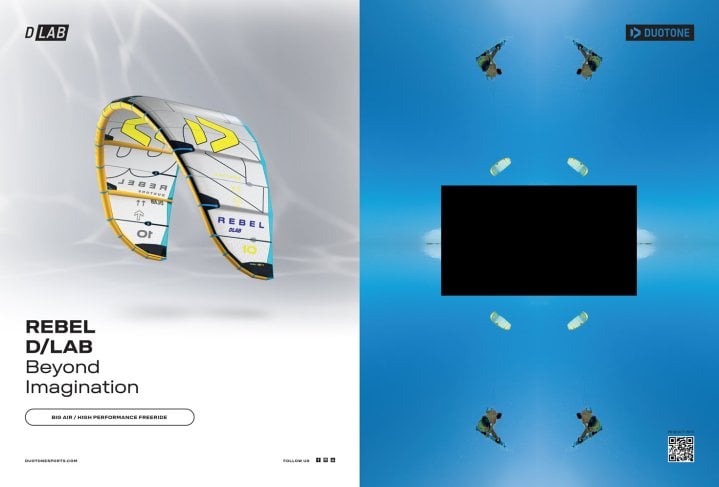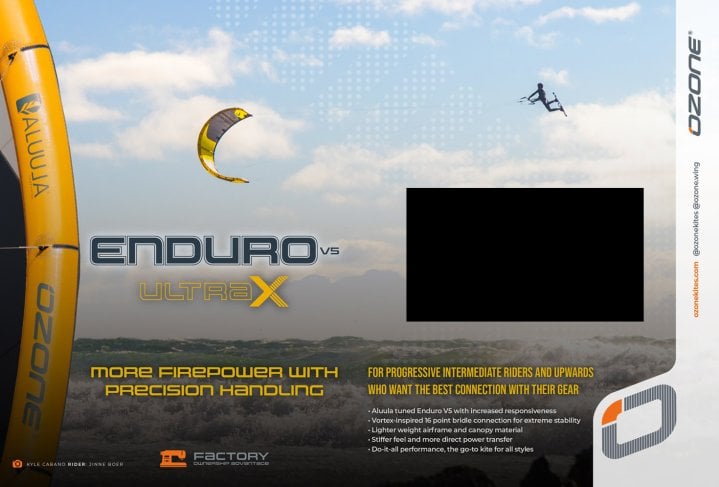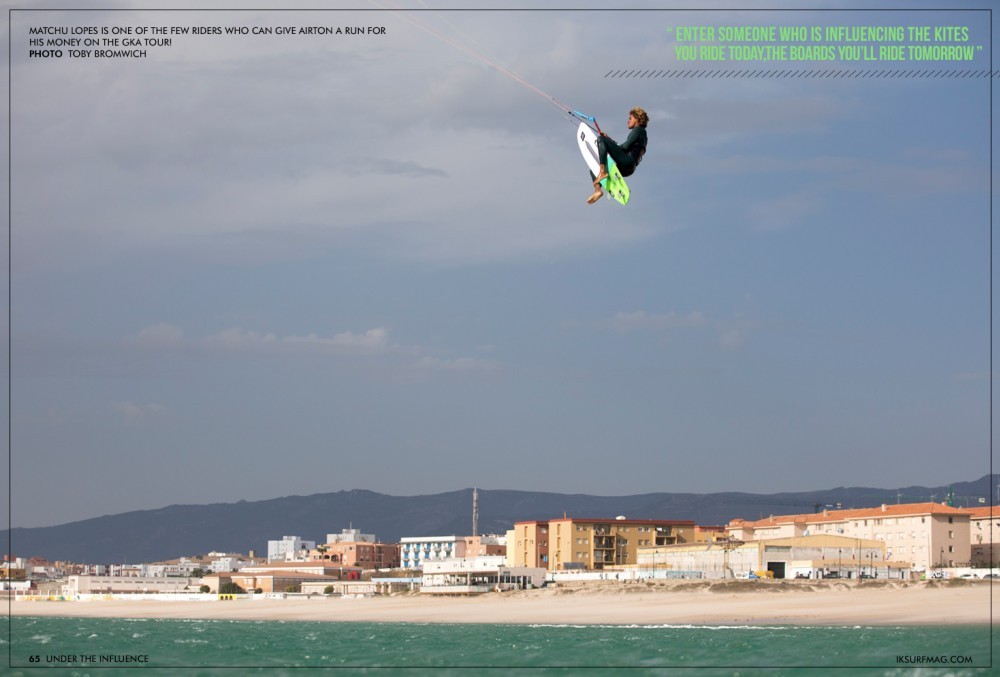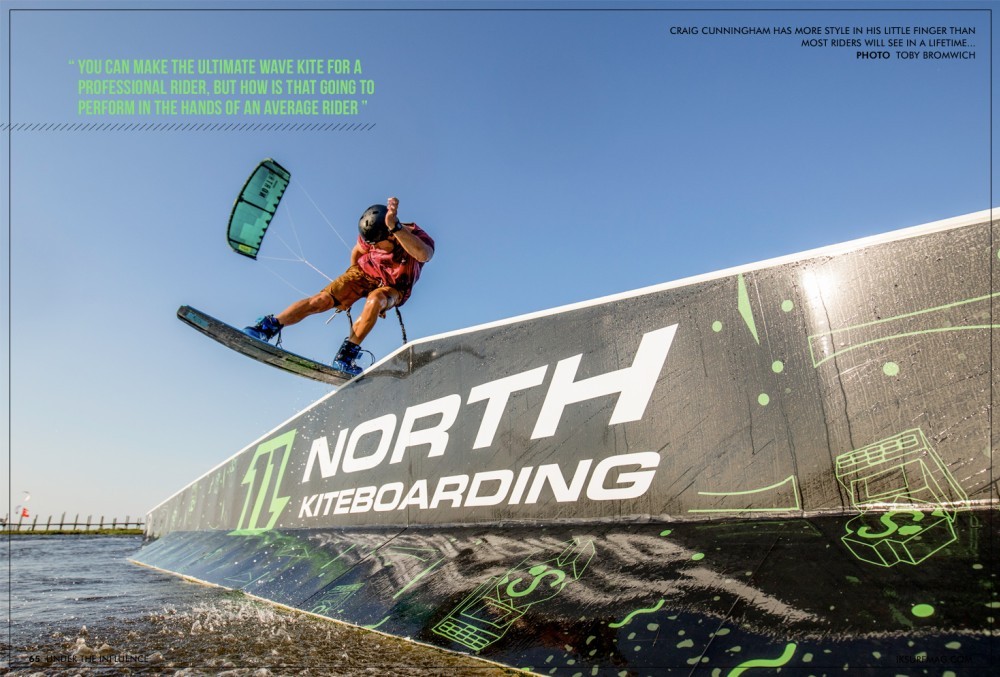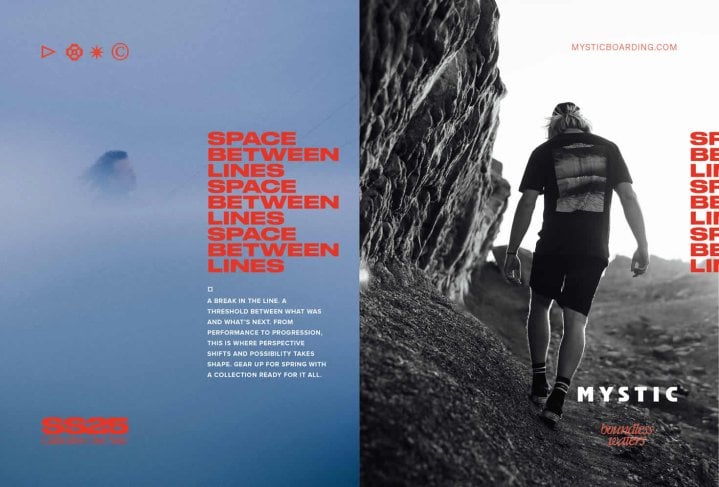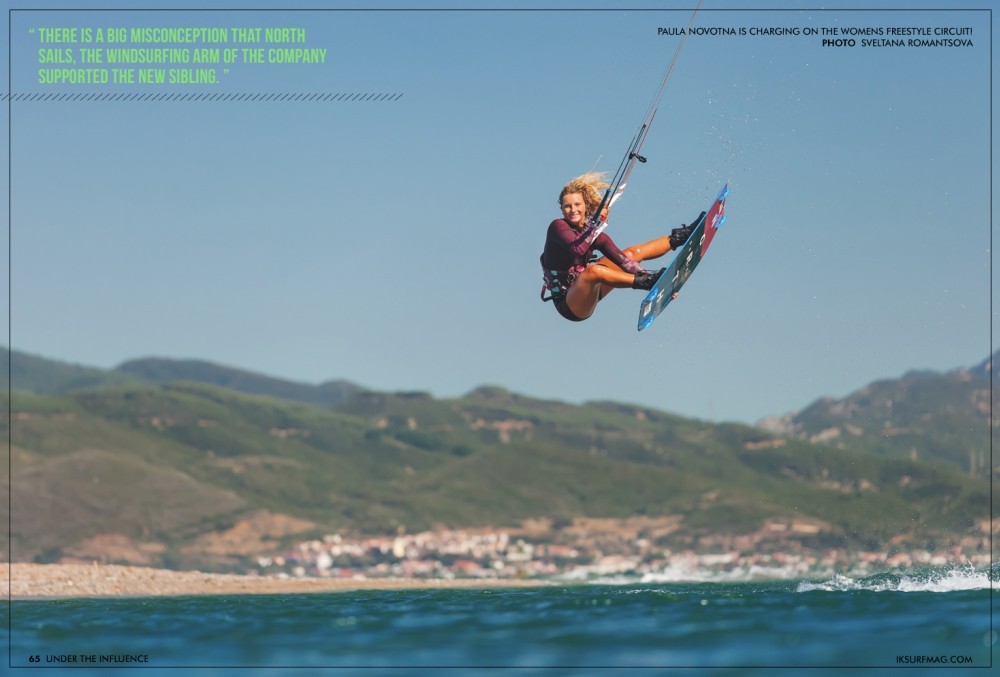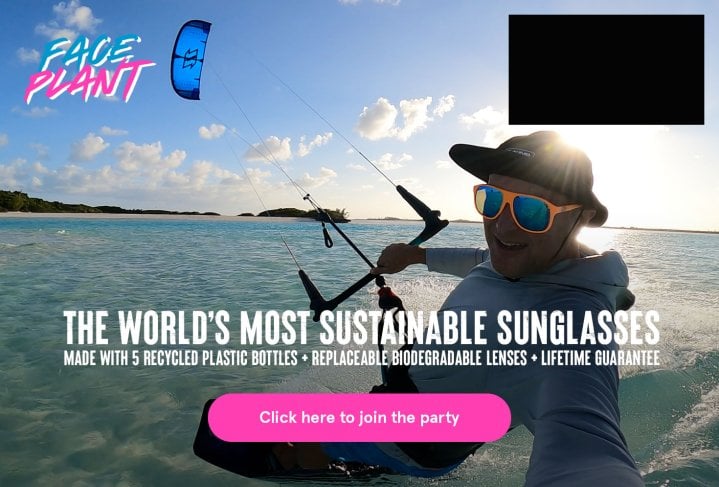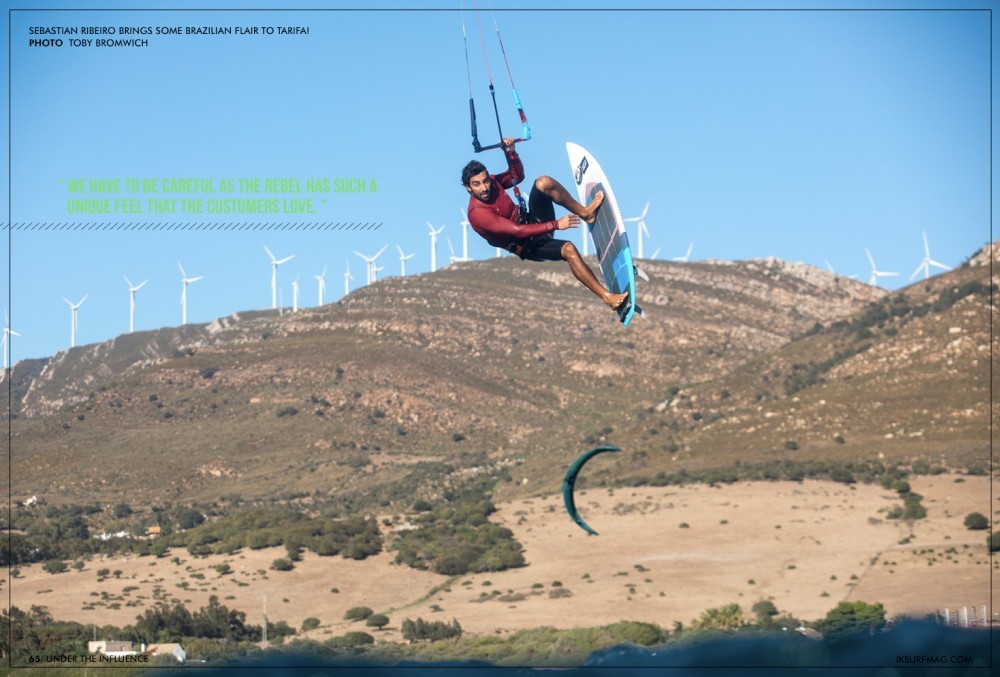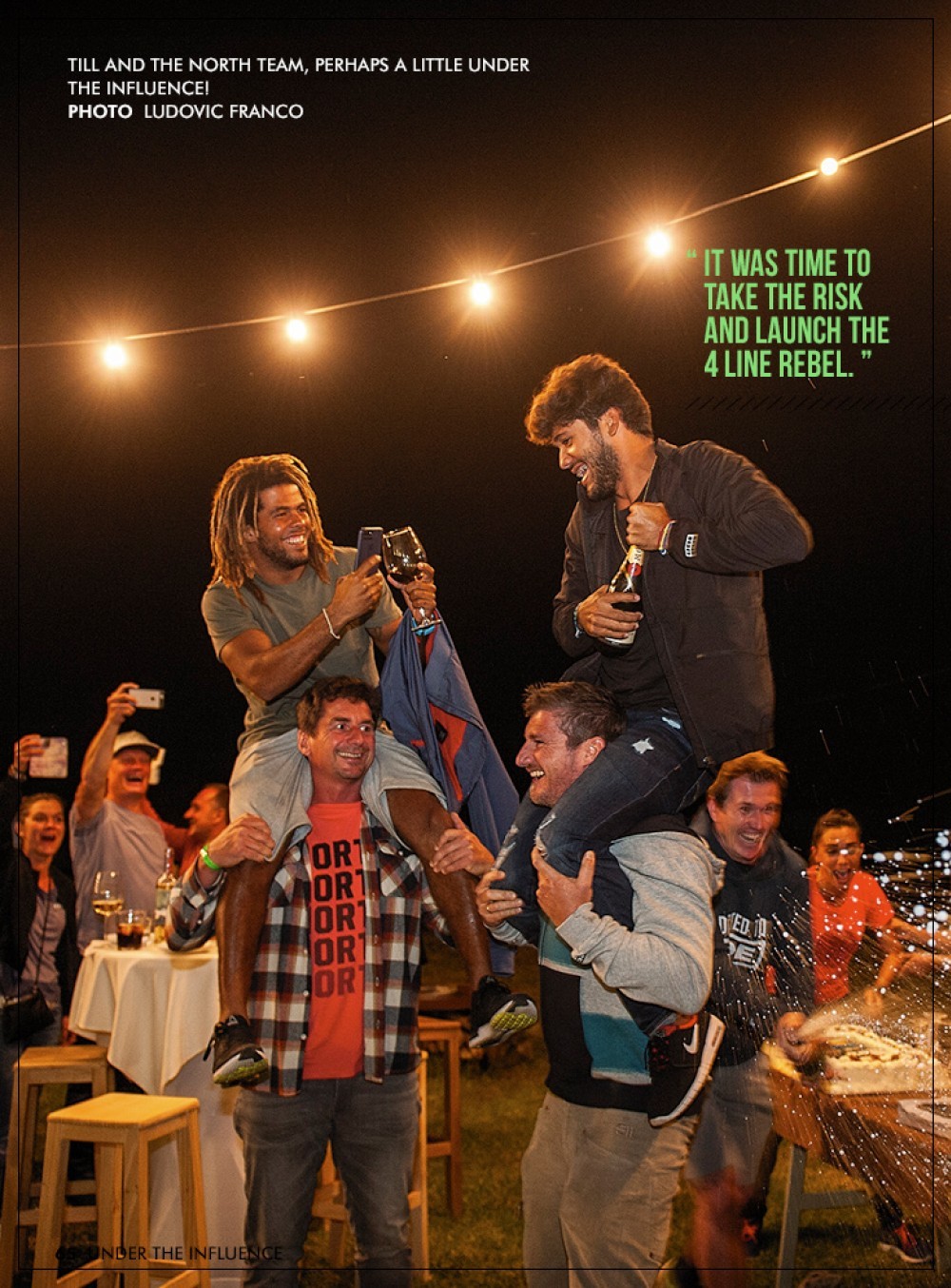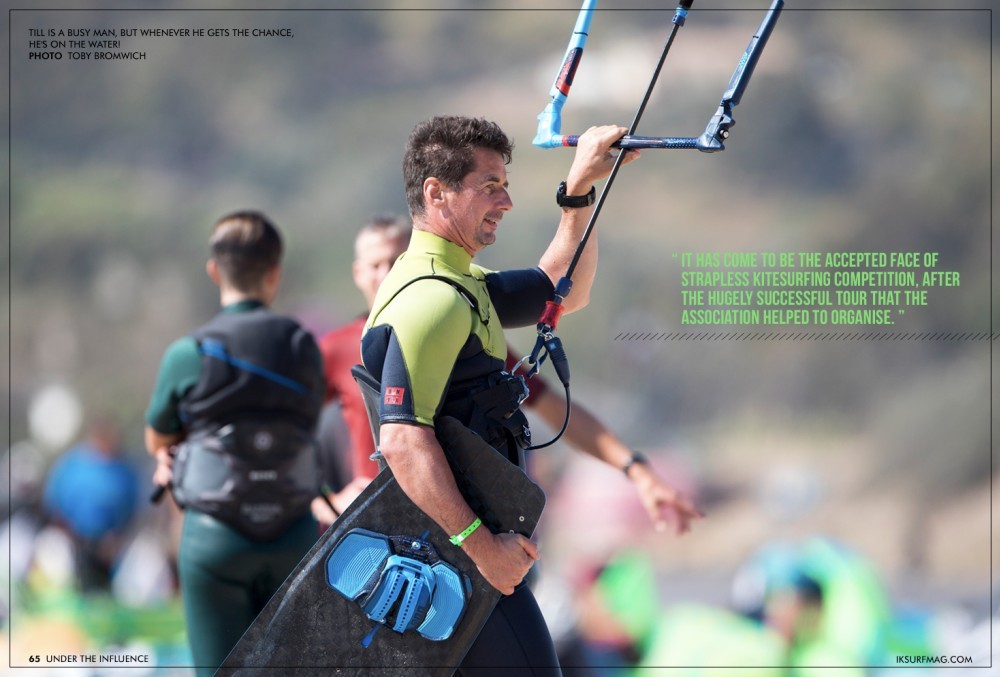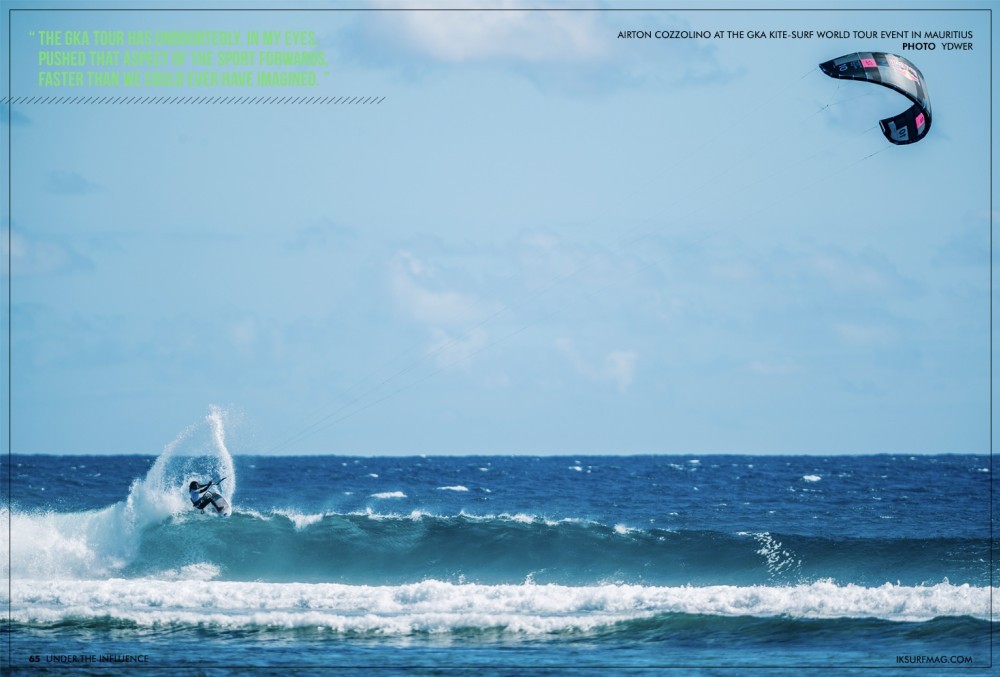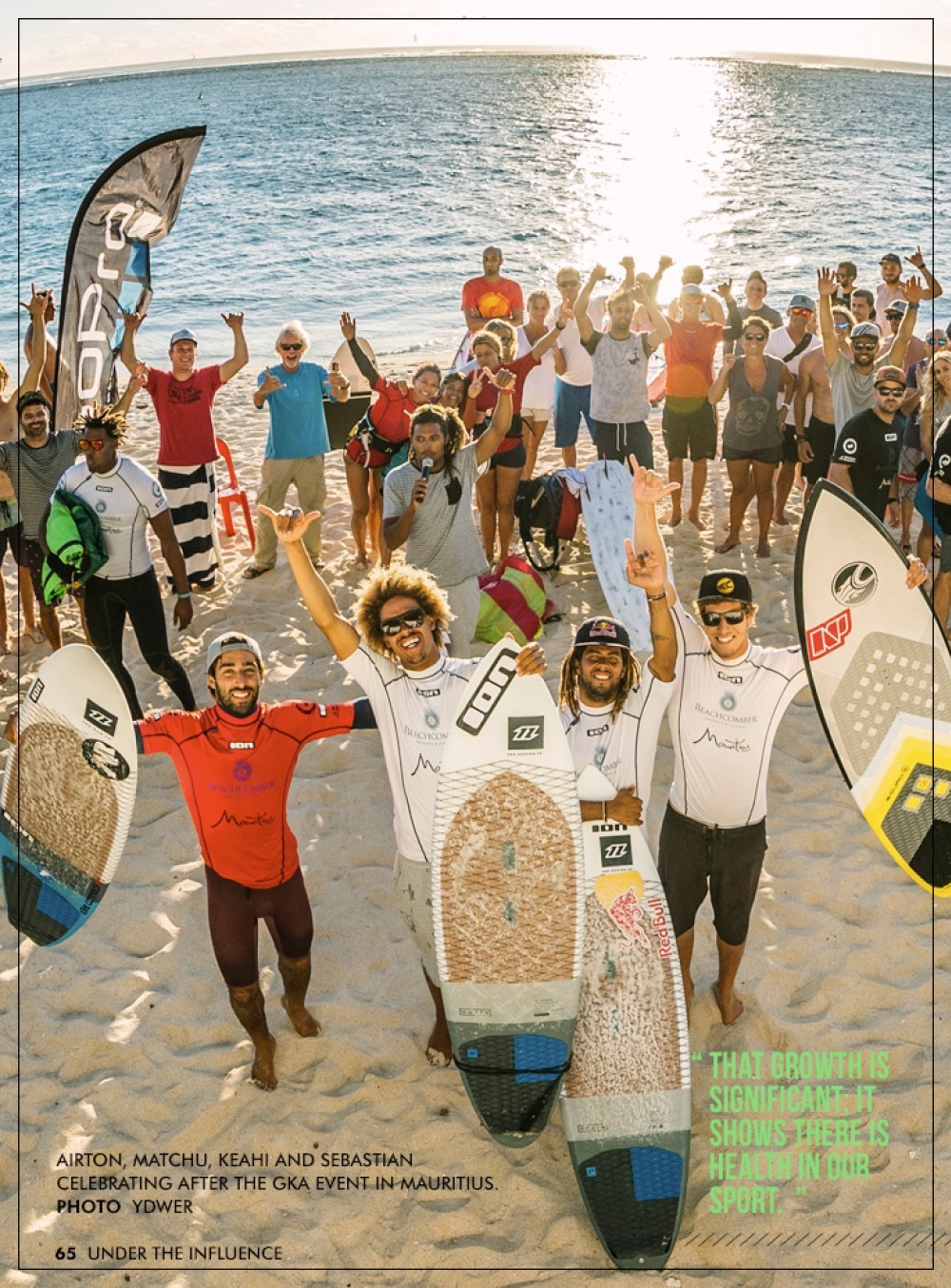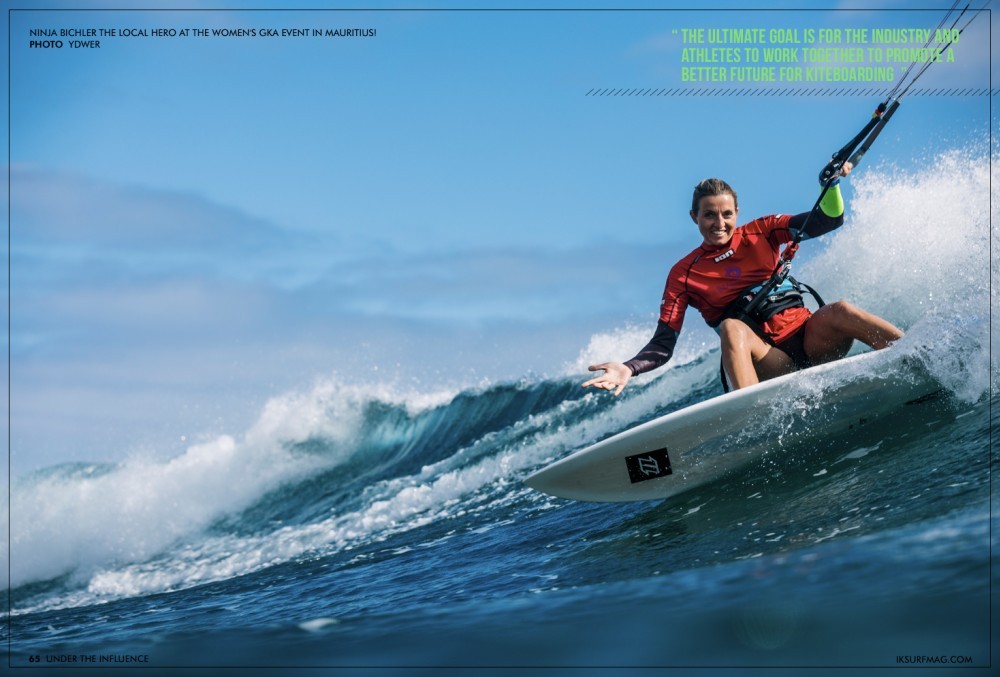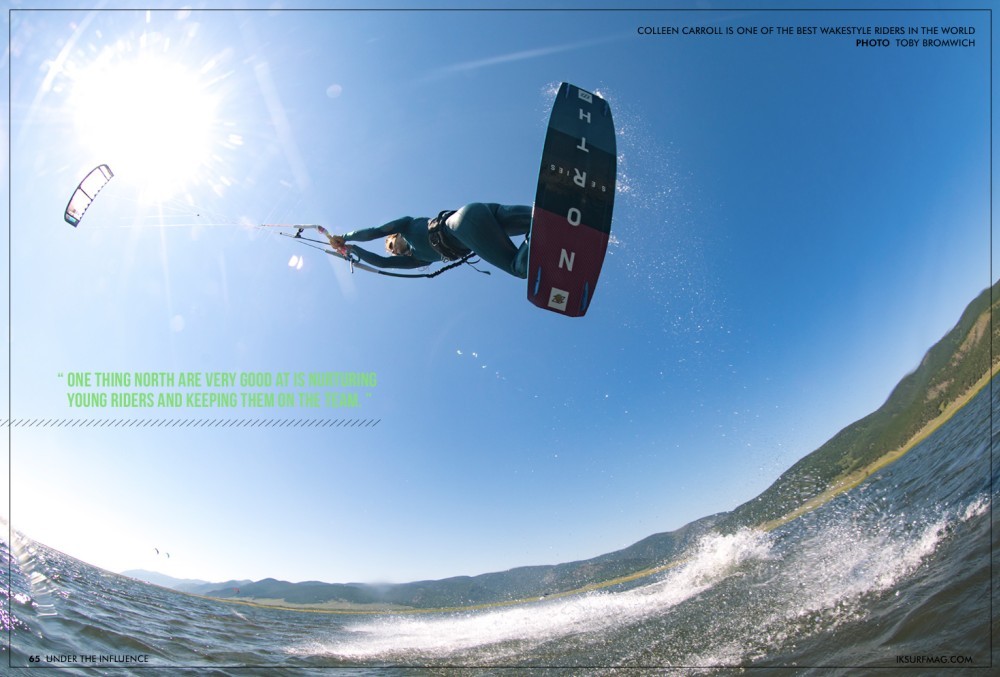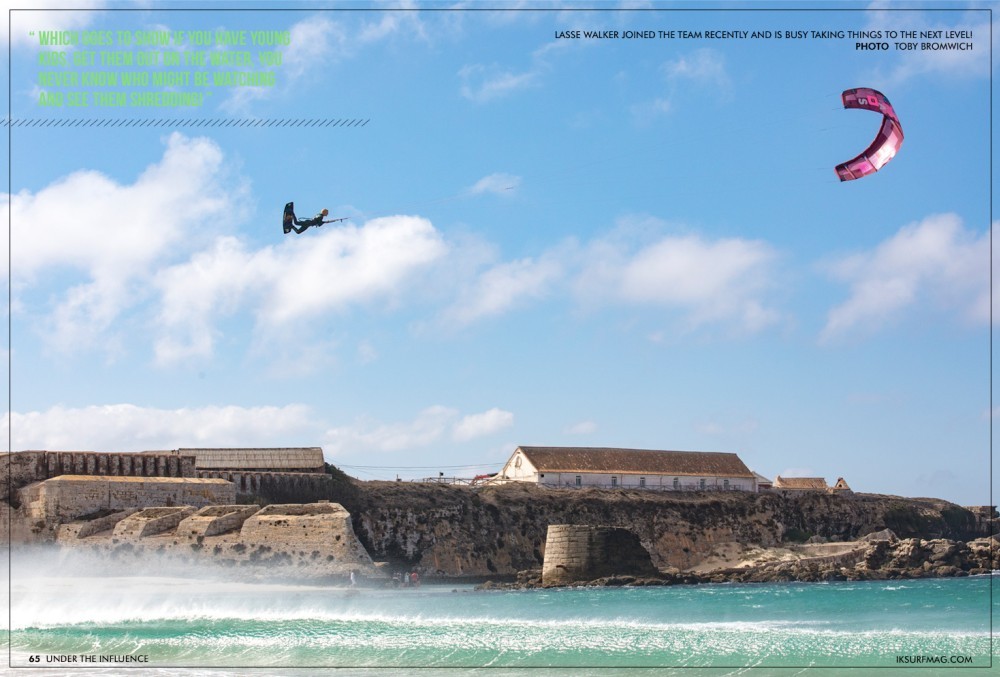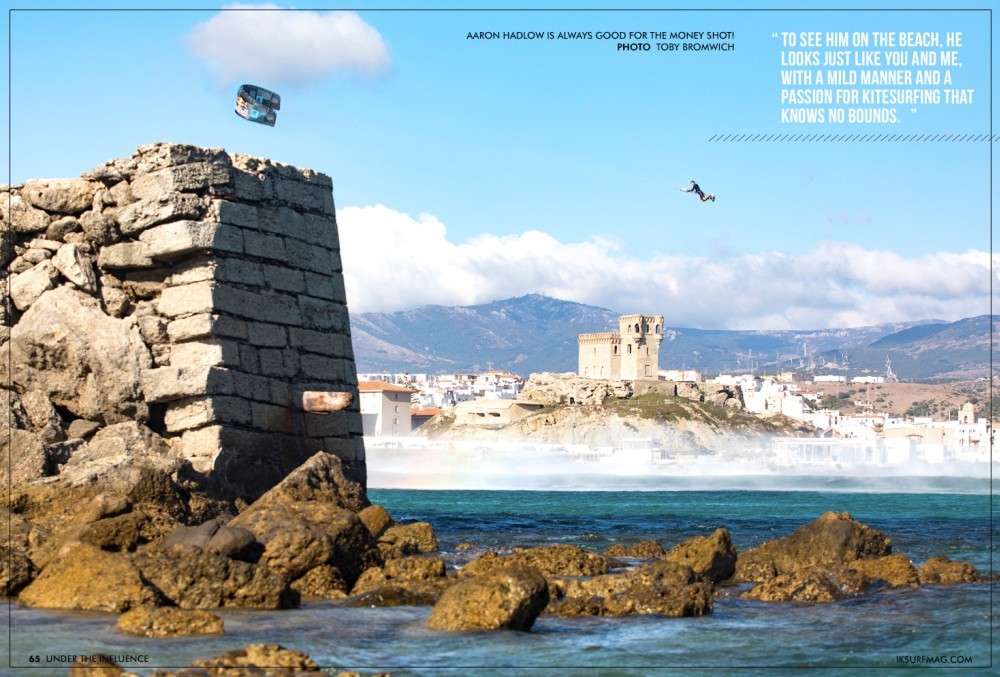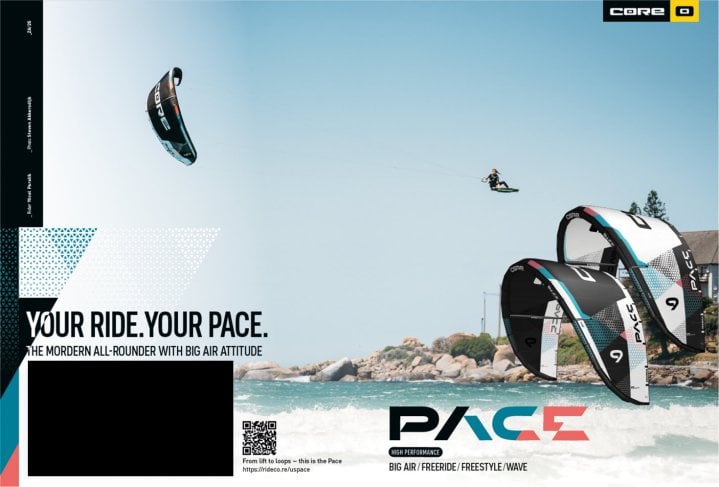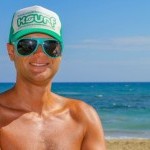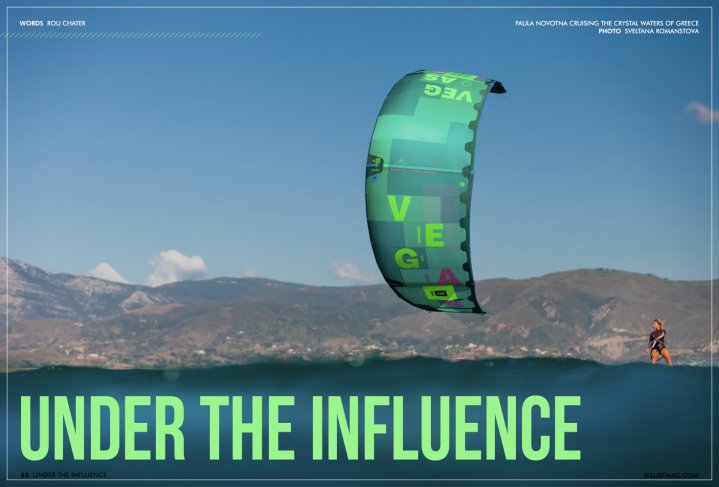
Under The Influence
Issue 65 / Fri 20th Oct, 2017
Rou Chater chats to perhaps the most influential man in kiteboarding right now, Till Eberle the CEO of Boards and More. Find out what his vision is for the future of our sport and what to expect from one of the biggest kite brands in the world over the next few years.
These days, far too much credit is being given to people with a bunch of likes on their social media accounts. These “influencers” are seemingly given the keys to the kingdom in return for a post or two about a coffee shop or a new pair of sneakers. To me, and I’ll beg to differ with some of you I expect, it seems like the world has gone a little mad, chasing digital clicks and likes while lacking real direction.
It’s as if social media is the emperor’s new clothes and global brands can’t quite grasp the concept, they just keep throwing money and product at the problem until it goes away. The phrase, “Instagram Influencer” usually imbibes a little bit of bile in my mouth. Obviously, your Kim Kardigans and Dustbin Biebers have a vast social reach, following and indeed influence. However, when you drill those numbers down into the microcosm of the kitesurfing world, subtract the fake likes and bots and get into to the nitty-gritty of influence, what are you left with?
Arguably, not a lot.
Enter someone who is influencing the kites you ride today, the boards you’ll ride tomorrow and the riders you’ll be watching on the Internet this evening. He’s even shaping the future of our sport as we know it, and the best bit, he’s too busy cracking on with real life for social media…
When the brand you are the head of has been at the top of the game for so many years, the decisions you make and the equipment you produce not only effects your customer base, but also the competition around you. They will look to mirror your moves or better your product and that results in a web of influence that stretches far beyond the walls of the office in Munich.
Meet Till Eberle, the CEO of Boards and More, which is the parent company of North Kiteboarding, ION, Fanatic, North Sails and Arrows Inflatable Technology. When you consider these brands cover kiteboarding, windsurfing, SUP, mountain biking and surfing, it’s easy to understand why Till is too busy to upload a picture of his latest meal to a social media profile.
What fascinates me most about Till is that while he is surrounded by an impressive team of riders, designers and marketing wizards he is still very much hands-on. He’s ridden most of the gear that the brands sell and he takes a close interest in testing and giving his feedback on almost every product that leaves the factory. If he feels something isn’t right, he’s not afraid to speak his mind.
“Sometimes when we are testing the product, I usually ride a kite when it is 70-80% finished for instance, the designers and I can differ on the direction the kite has taken. What the designer wants and what the consumer wants can often be very different things. You can make the ultimate wave kite for a professional rider, but how is that going to perform in the hands of an average rider, or our customers. I always put myself in the eyes of the kitesurfer who is going to buy our products.”
It is this commercial awareness that has led North Kiteboarding to become the world leader in the industry. Not just in terms of the number of kite sales, but also in terms of production and quality too. When you are the leader of the pack, others will no doubt follow, all of a sudden your decisions aren’t just steering your own products, but that of the entire industry too.
North Kiteboarding was one of the first kite brands to move production away from the Far East, relocating to a state of the art facility in Sri Lanka. The goal here wasn’t just to protect the copyright of the designs and the innovations, an issue that is rife in China, but also to improve the quality of life of the workers and the impact on the environment. These days more and more brands have followed suit; even if they aren’t moving away from China, they are all becoming acutely aware of their footprint on society.
The quality of the product coming out of the Sri Lankan set up is undeniably excellent, for sure there has been the odd hiccup along the way, but all brands suffer from issues, especially when they reach a certain size. However, with a strong warranty to back themselves up and great after sales service they have remained a market leader, in what has become an increasingly volatile market over the last few years.
Till’s handle on things stems right back to the roots of our sport. In 2001 he became the product manager for a new brand, North Kiteboarding, previously he was the product manager for Fanatic Snowboards. A keen kiter, Till joined Ken Winner as the designer and Christine Gutter who was in charge of marketing. They quickly got Jaime Herraiz on board after giving him an early prototype to try in Hood River. North Kiteboarding, as you know it, was born.
There is a big misconception that North Sails, the windsurfing arm of the company supported the new sibling. However, that wasn’t the case, and North Kiteboarding had to stand on its own two feet pretty quickly. It is fair to say there was an established distribution channel and network, but in terms of any other help, it was down to the grit and determination of those four people.
In those very early days with so few staff, it was a team effort, and that team spirit has carried over to the present day. These days the team has grown, although it’s probably smaller than you think, just eight people working full time on R&D and product development, five people full time on marketing and a sales manager.
Quality over quantity always shines through, with kite designers like Ralf Grösel, Ken Winner and board shaper extraordinaire Sky Solbach on the team it’s easy to see why the product is so refined. After last years massive push on the Click Bar, or the “Game Changer”, which evokes a chuckle from Till when I mention it, the marketing slogan not the product I hasten to add, what’s new this year?
“The Click Bar was a big launch for us last year, and for sure we pushed hard with the marketing. It’s been a really big success, with about 40% of our total bar sales coming from the Click Bar. What was interesting was there was an influx of initial early adoption, and then sales died down. I think a lot of people weren’t keen to be our guinea pigs testing the product in the market. However, after about 5-6 months when no major issues or flaws had arisen sales picked up again, and now the Click Bar is a really strong product for us.”
“This year the major news is changing the Rebel from five to four lines, a big step for us. We tried it already in 2012 with the Fuse, which was marketed as the Rebel on four lines. It wasn’t quite the same though, and the Rebel customers never really accepted it. We have to be careful as the Rebel has such a unique feel that the customers love. We’ve spent the last four years working on perfecting the Rebel on four lines to get it just right.”
“There’s a group of people who love the Rebel on five lines, however, equally there is a group who say ‘I’d love to buy a Rebel but it has five lines’. In the end, we decided once we had the feeling from the 4 line kite as close to the soul of the classic Rebel, and felt it was a better overall kite in terms of handling and performance it was time to take the risk and launch the 4 line Rebel.”
“It’s gone really well for us and I think sales are up by 20% this year, but of course we have people complaining it doesn’t feel the same as the old kite. We feel it’s a better kite now, however, and die-hard Rebel fans will get their heads around it eventually. If you want to ride it with the 5th line you still can, but the 4 line safety has come a long way in recent years and for us, this was the logical step at this stage.”
To give you an idea of how hands-on Till was in this process, both he and the product manager flew to Maui to meet with Ken Winner to refine the design and ensure it was just right for the market. Till likes to have a handle on all the products; the Neo, Dice and Evo all get a sign off from him in addition to the Rebel. Not to mention the boards and the new foil program too, although these days he leaves the freestyle gear and the high-end racing kit to the likes of Aaron Hadlow and the rest of the extensive team.
Before we move on to talk about the team, there is another majorly influential aspect of Till’s life on the sport of kiteboarding. He was one of the founding members of the GKA, the Global Kitesports Association, and is currently the 1st Chairman with Robby Naish and Clinton Filen as 2nd Chairman and Treasurer respectively. Initially, the idea of the industry coming together was met with some resistance; nearly three years on it has come to be the accepted face of strapless kitesurfing competition, after the hugely successful tour that the association helped to organise.
The GKA Kite-Surf World Tour to give it the official title hosted events in Tarifa, Dakhla, Fuerteventura, Germany and Mauritius this year. If you’ve never been to one of these competitions to watch, you are missing out, the strapless tricks being done are simply unbelievable right now. You could argue that without this Tour to push the riders the level of strapless riding might not be where it is at the moment. For sure the guys from Cabo Verde would have been pushing the limits, but would that have inspired a whole host of riders to train as well. The GKA tour has undoubtedly, in my eyes, pushed that aspect of the sport forwards, faster than we could ever have imagined.
That’s real influence right there, although the tour is just one aspect of the GKA and it isn’t even really the main thrust of the organisation. Originally set up with beach access in mind, the association successfully stopped the ban of kitesurfing and other watersports on the beaches of Northern Germany. Their mission statement is to ensure safe access for all kitesurfers around the globe and should another issue arise you can bet the GKA will be there championing the benefits of the sport and fighting to keep beaches open to kitesurfers.
In addition to this, the GKA has brought the brands together, something that doesn’t often happen in a world where competition, egos and attitudes can be rife. One purpose of that is to collate information that can be used to further better the sport. For instance, we now know, thanks to the GKA, that the worldwide kite market in 2016 was around 150,000 kites. A more accurate estimate than has been achieved in the past based on the sales figures of the members and then working out what the non-members did using a bit of extrapolation.
Even better news is that we can see that the sport grew, in terms of sales, by about 2% from 2015 to 2016. That growth is significant; it shows there is health in our sport. Till thinks we have grown more than that; he puts the figure at between 6 and 7% when you consider not everyone takes a lesson and buys brand new gear every year.
Lastly, the GKA is working on safety, they want to reach a safety standard similar to parachuting, and the vision is to have the same method to release a kite and leash across all brands. “We don’t want all the manufacturers to use the same system, but we do want to have a set of safety standards that they must all adhere to. We also want the method to be the same; it is important that no matter what kite you are flying you can eject it in a familiar manner. Imagine the trouble if all parachutes used a different release technique!”
The ultimate goal is for the industry and athletes to work together to promote a better future for kiteboarding, and that’s an essential objective in our opinion…
Another aspect where Till has great influence is within the team, split into two for Wave and Freestyle. Philipp Becker looks after the wave and strapless riders while Tom Kaiser looks after the freestyle and wakestyle team. When you look at the Team roster, it’s a real who’s who of the kiteboarding scene. It’s also huge. Those riders are some of the most influential kiters on the planet in terms of style on the water, and they all have a great respect for Till and his vision for the sport.
Perhaps even more impressive is the Ruben Lenten story. “Ruben came to us and asked for a set of kites, and we had to explain that we already had Aaron on board. Rubens a great guy, but when you have Aaron Hadlow, they are really too close to each other.”
“We also want to look for younger riders and the next generation. In the end, we gave Ruben the kites but not a sponsorship deal and a year on he’s still riding them. He also wanted to ride his own boards and for us, if you ride North, you ride the whole package. Ruben’s a really amazing kiter and one of the most famous riders so I have to say thank you, Ruben, for choosing us!”
One thing North are very good at is nurturing young riders and keeping them on the team. Naturally, there are some big-name signings along the way, but if you look at Jaime Herraiz and Sky Solbach who have been there since the beginning, it says a lot about the brand. Equally young riders like Airton Cozzolino, Tom Court and Matchu Lopes joined the team at a young age, before they were even proven assets, and have gone on to become global superstars under the careful nurture of the brand.
In terms of what it takes to become part of the North Team, just in case you are reading this and you want to get signed up Till had this to say…
“For me, we really look at what kinds of abilities the rider has, how we can use those talents in the best way and in the end if someone is a good rider who is winning contests then that is also important as well. If we can add onto that a personality, then that is something the marketing team can work with. They don’t necessarily have to be the most friendly rider out there, but they need to fit with the brand and most importantly they can’t be arrogant.”
“We need the riders to work with us too, for example, Tom Hebert came to us as a new freestyle signing for contests, we signed a three-year contract and then he injured himself a few months in and decided he no longer wanted to compete! It was a bit of an issue as we had signed the contract with a view to him winning freestyle contests for us, and now he wasn’t going to compete.”
“I sat down with him and we discussed some options and in the end, he came up with the idea for Tom’s Kitchen, which showed off his crazy personality perfectly and has gone on to become a hugely successful video series. We were still left looking for a freestyle rider, but it all worked out for everyone in the end.”
In terms of the future, North have a young riders program, all the dealers and distributors are tasked with looking for up and coming riders on the beaches and if they spot talent then North will get involved and support them. Which goes to show if you have young kids, get them out on the water, you never know who might be watching and see them shredding!
As far as kites are concerned, Till doesn’t think there will be too many huge leaps forwards like the switch from two to four lines and bow kites which he cites as the two most significant developments within the sport. His vision is kites tuned more to the riders, like the current line up at North, and equipment that is plug and play and works straight out of the bag. Overlaying it all is a vision that puts the customer experience first and foremost, and it’s this vision that has kept North Kiteboarding at the head of the game.
Better products for the riders, added encouragement for young up and comers, continued support for the professionals on the team and a cohesive industry that works together to ensure access for all around the world, better safety and a competitive scene that is worth getting excited about…
Perhaps the most intriguing aspect about Till Eberle is how understated he is; he might just be one of the most powerful people in kitesurfing right now. Yet to see him on the beach, he looks just like you and me, with a mild manner and a passion for kitesurfing that knows no bounds. When you consider how much influence he has over our sport, it’s good to know we’re in safe hands.
Videos
By Rou Chater
Rou has been kiting since the sports inception and has been working as an editor and tester for magazines since 2004. He started IKSURFMAG with his brother in 2006 and has tested hundreds of different kites and travelled all over the world to kitesurf. He's a walking encyclopedia of all things kite and is just as passionate about the sport today as he was when he first started!


